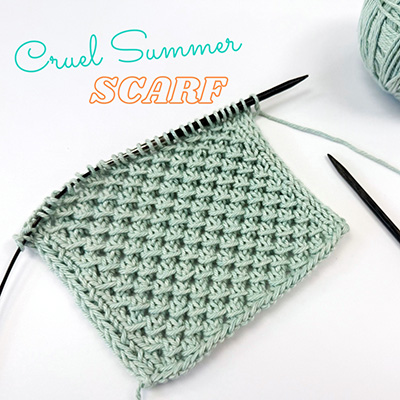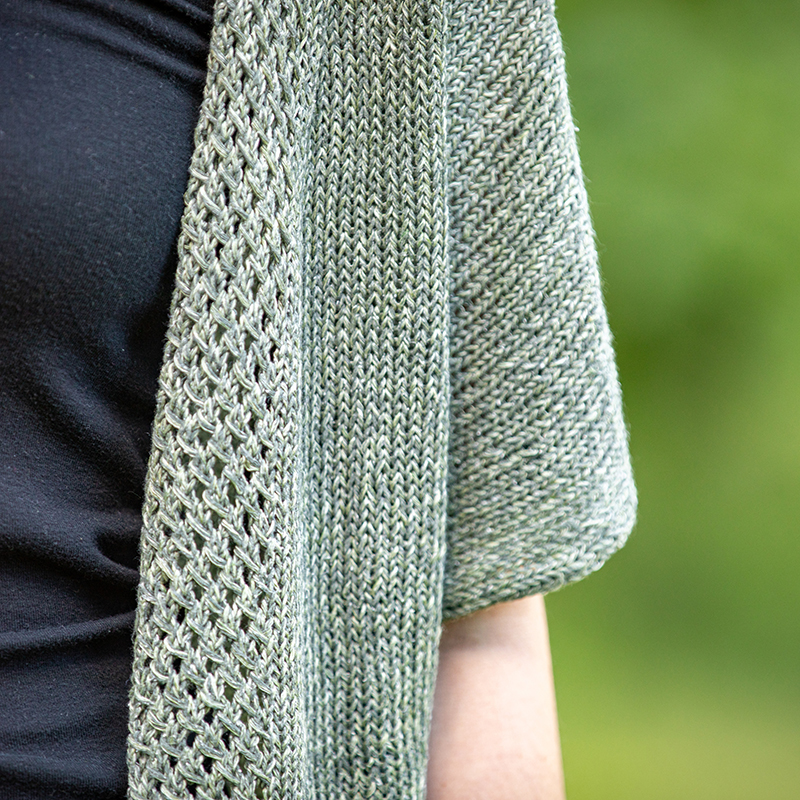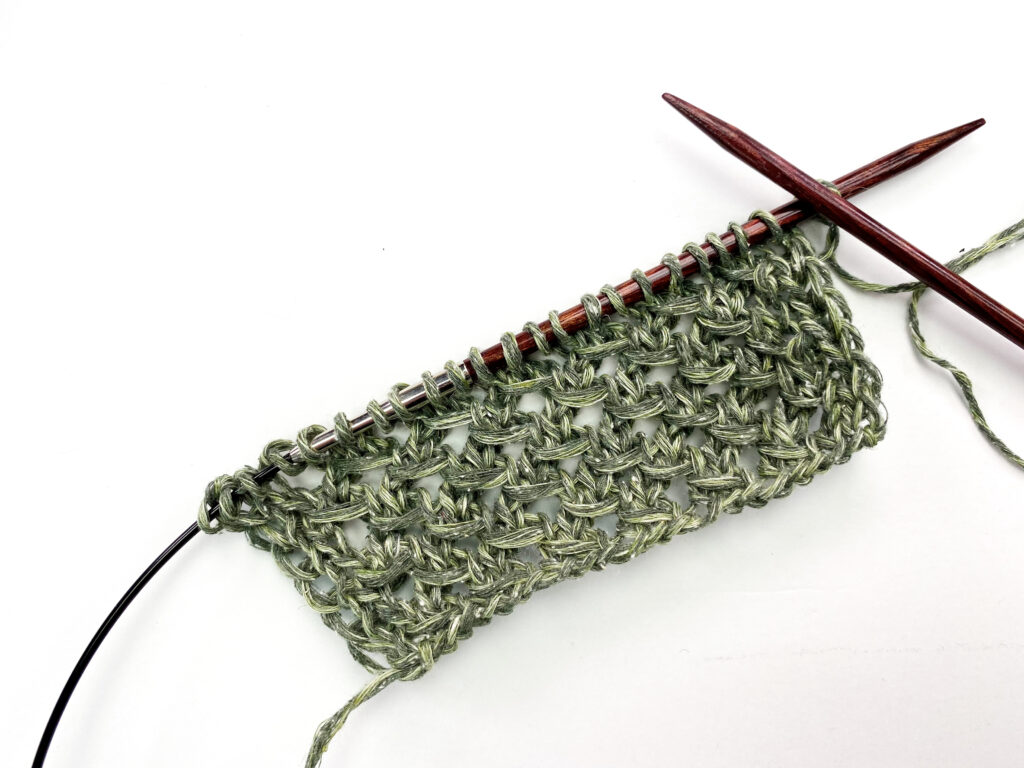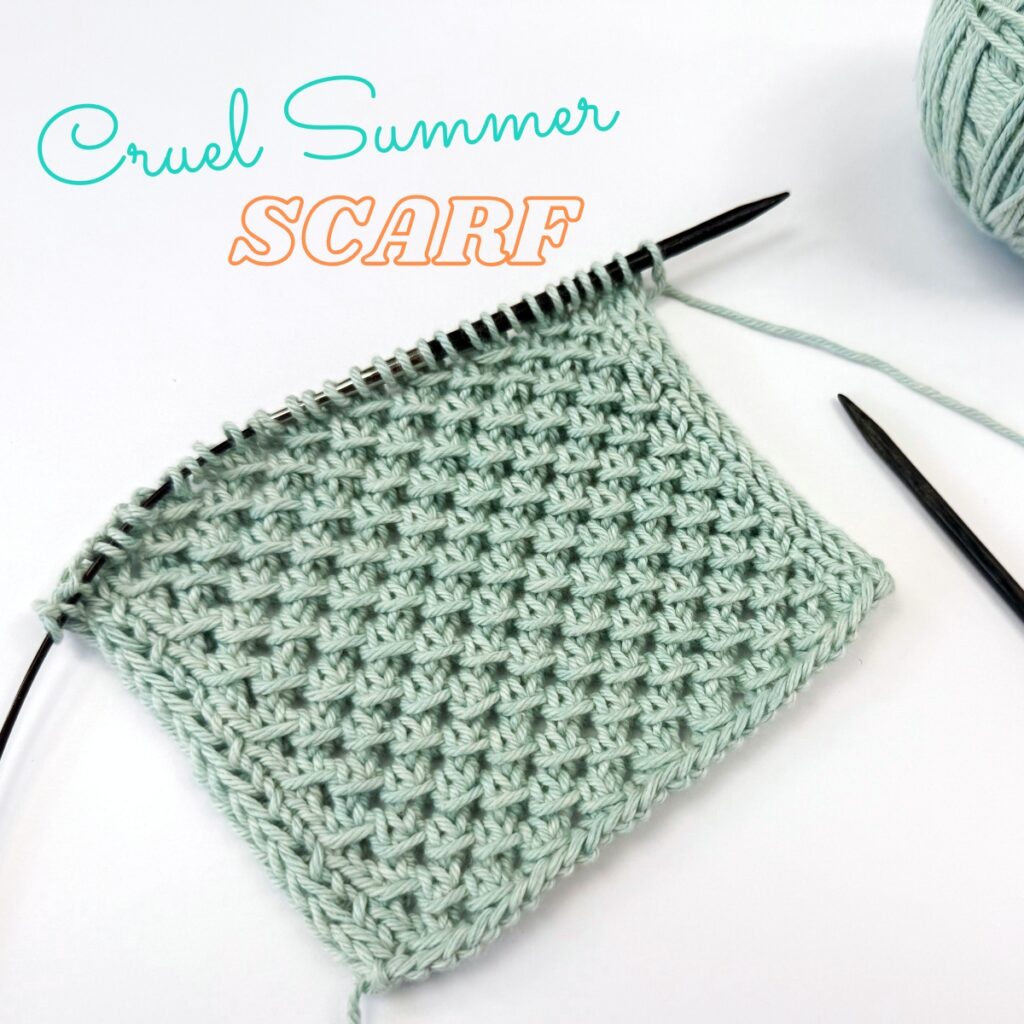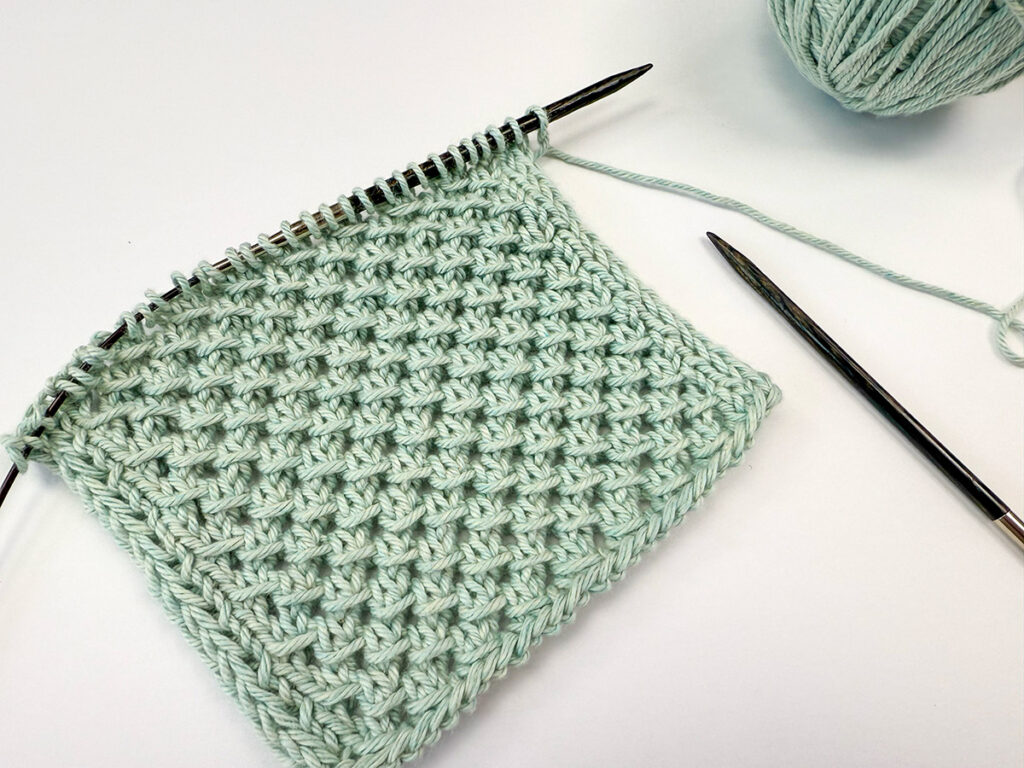It’s been 4 years since I first released my Cruel Summer cardigan! This seamless layering cardi was designed for warm-weather-friendly fibers like linen or cotton and can be the perfect little layer to throw on even in the warmer months. It calls for DK-weight yarn and the original yarn I used was Berroco Chai, a linen/silk blend (it’s been since discontinued, but I provide lots of other yarn suggestions on my Cruel Summer tips page!).
One of the main design features of this piece is the stitch pattern that adorns the bottom hem and the front edges – it’s called the “Irish Mesh” stitch pattern and it’s such an interesting (but not too difficult) stitch to knit.
This stitch pattern is a 4 row pattern. But the WS’s (wrong side’s) are always just purled so the patterning work only occurs on the 2 RS (right side) rows. And on those 2 rows, you are working the same kind of stitches: YO (yarn over), sl 1 (slip 1), and psso (pass slipped stitch over). That’s it!
I have a video lesson that walks you through how to work the pattern exactly as written in the Cruel Summer pattern, as well as provide some tips on “reading your knitting” with it – click this link to watch it on YouTube.
After you get a little acquainted with this stitch pattern, if you would like to practice it a bit (or if you like the stitch pattern but not ready or interested in starting a new garment project), I think this stitch pattern would be great for a little Summer Scarf! So I whipped up a little sample and wrote out the instructions for you below.
Cruel Summer Scarf
Just like the cardigan, you’ll need DK or Worsted yarn that is either a linen or cotton (or blend). In the photo below, I’m using Pima 100 by Berroco.
To use the Irish Mesh stitch pattern that’s featured in Cruel Summer in a simple scarf, follow the instructions below. It will create a thin scarf that has a slip stitch edge and measures approx. 5″ (based on a stitch gauge of approx. 5 stitches per inch). You adjust the size (or make it work for thinner/thicker yarn), you can just cast-on more or less stitches. The key is that you need to cast-on a multiple of 3+4 (I explain more in the “tips” below).
- With DK or Worsted-Weight yarn and US 7/4.5 mm needles (either a 24″ circular or straight needles), cast-on 31 stitches.
- Next row (WS): sl 2 sts purlwise with yarn in front, then p to end.
- Row 1 (RS): sl 2 sts purlwise with yarn in back, then k2, [YO, sl1, k2, psso] to last 3 sts, k3.
- Row 2 (WS): sl 2 sts purlwise with yarn in front, then p to end.
- Row 3 (RS): sl 2 sts purlwise with yarn in back, then k1, [sl1, k2, psso, YO] to last 4 sts, k4.
- Row 4 (WS): repeat row 2.
- Repeat rows 1-4: until you reach your desired scarf length, ending after working a RS row (so either after working a row 1 or row 3).
- BO all sts purlwise (on a WS row).
Additional tips for the above scarf:
- Make sure to use a yarn that is either a linen, cotton, or a blend of those fibers. The reason is because there’s no trim added to the bottom/top/side edges. Plant-based fibers (like linen and cotton) don’t typically need trim to lay flat – they usually have minimal rolling. The yarn I used in the above little sample is Pima 100 by Berroco (a 100% cotton).
- In the Cruel Summer cardigan pattern, you only slip 1 stitch at the beginning of each row, but in the above I have you slipping 2 stitches. So if you refer to the video lesson about this stitch pattern, just keep in mind that you’ll instead be slipping 2 stitches (but doing so in the same manner as I show in the video).
- When working any of the “slip 1” (or when slipping the 2 sts at the beginning of the row), you always do so as if to purl.
- To adjust the width of your scarf, you can cast-on a different number but just make sure it’s a number divisble 3+4. For example, the number 37 would be divisible by 3+4. When you take 37 and subtract 4 you get 33 and that number is divisible by 3.
Abbreviations used above:
- RS/WS = right side/wrong side
- sl = slip
- sts = stitches
- k = knit
- p = purl
- YO = yarn over
- psso = pass the slipped stitch over the k2
- BO = bind-off

